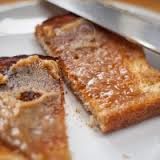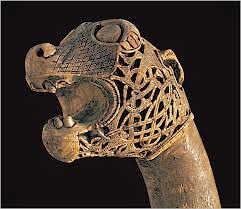How did they, what with, and when … feed the British Army of
World War One – ever considered it? This
post refers to the Army and its entourages only … and not the Royal Navy, nor
Royal Air Force, nor other necessary personnel at home … I can’t really
conjecture about those.
 |
| John Nash: Over the Top |
I had thought about the food pre war – which would have been
basic for most people, but gourmand still for many … as large parties continued
to be held at the wealthy and nobles’ estates … as Escoffier’s La Ligue des Gourmands shows us:
 |
| The Savoy - Escoffier's first London hotel - later he managed the Carlton and the Ritz |
Escoffier (1846 – 1935) was a French chef, restaurateur and
culinary writer … and still is a legendary figure among chefs and
gourmets. He founded La Ligue des Gourmands – a dining club
for his friends in 1912.
This club spread throughout Europe and attracted thousands
of members – it is notable for the Diners d’Epicure – menus that were served
simultaneously in many restaurants. The
first was served to 4,000 members in 37 European cities – the last held in July
1914 in 137 cities and to 10,000 diners …
 |
| German Submarine zone 1915 |
… and as you will know: the ‘Great War’ began on 28 July
1914 with Austria-Hungary’s declaration of war with Serbia … Britain entered
the war (together with the Commonwealth countries ‘by default’) on 4 August
1914 – after Germany had invaded Belgium on 3rd August 1914.
 |
| Dodine |
That first menu included Dodine
de Canard au Chambertin, a duck casserole cooked in a dodine – looking that up it appears more to be a method (galantine)
– a recipe and some infocan be found here.
 |
| A BBC tv programme on Mrs Beeton 2006 |
I got side-tracked as is my wont …
Really up until the First World War a cook’s life in the UK
had been ruled by Mrs Beeton (if you could access some of her work), local seasonal
food, and lack of refrigeration …
Women weren’t working but were doing the home chores … most
did not have a cook, or scullery maid (or servants galore) … national
newspapers had a women’s page with bossy exhortations on what to do and
how to cope in those early years of the 20th century.
 |
| Fray Bentos label from a tin |
The early 1900s saw tinned food, including Heinz baked beans,
Bisto gravy and Bird’s custard, introduced as new commodities, while ice closets
were being added to the kitchen … also food was being shipped in from distant corners
of the world … particularly corned beef from Argentina.
Electricity was not up and running – so much was still done
by candlelight and cooking on coal/coke stoves, or braziers etc … electricity
really only spread into homes during the 1930s …
Back to WW1 and the logistics of feeding the Army … most of
this information comes from Jasper Copping’s article in the Daily Telegraph of
19 May 2013 which references the Guide by Andrew Robertshaw, curator at the Royal
Logistic Corps Museum, to the food eaten by British Soldiers of the First World
War with recipes for some of the meals.
Check out Amazon for a book – while the article will give you a fuller overview.
Apparently the ration strength of the British Army was 5,
363, 352 people worldwide, including over two million on the western
front. To feed these men the Army
Service Corps had allocated 12,000 officers and 320,000 men …. as a side note:
this was the size of the entire British Army sent to the continent at the
outbreak of war.
The men were paid in local currency and were able to buy
additional food when not at home … an option not available to many back in Blighty – they simply went hungry. Food parcels were sent from home – via a very
efficient postal system.
 |
| Eric Henry Kennington: Signaller off duty (1916) |
Everyone had the same rations … the horses were fed first (I
guess not the same food!), then the ranks, and then the officers – even though
only a fraction of the men were ever in the trenches at any one time … there
were also the administrative camps logistically keeping the wheels turning …
… the logistics would have included: field hospitals, staff quarters,
railways, roads, communications systems, the postal system home, stores – food,
clothing, spares and munitions … etc etc
 |
Foods on offer included – bully beef, with another tinned
staple from Scotland “Maconochie”: a
pork and beans meal … curry was standard fare or used to spice up the stews …
cooks were encouraged to forage for nettles, sweet docks, wild mushrooms and
marigold flowers with which to season dishes.
There was no official vegetarian option, although provision
was made for Indian personnel, which included mixed spices, Dhal and Attar …
vegetarians received additional sugar or milk, instead of milk; while other
variations were produced for the Chinese, Egyptian and Fijian ‘volunteers’.
 |
| Toast and Dripping |
Cooks were careful to avoid all waste … leftovers were sold
as swill to local farmers, while dripping was saved for use in the manufacture
of explosives.
As the front lines extended and grew, food was prepared nearer and nearer to trenches with many cooks being killed …
As the front lines extended and grew, food was prepared nearer and nearer to trenches with many cooks being killed …
Some of the dishes in the article: Brown Stew; Potato Pie; Sea Pie (a suet
crusted meat pie – why called sea pie: I’ve no idea!); Curried Cod; Milk
Biscuit Pudding – feeds 100 men.
Egg and chips would have been available from the French countryside
- provisions for those off duty (as such) …
Trench Cake – came from Elizabeth Craig’s Economical Cookery
book (not our Elizabeth!) … flour, marge, vinegar, milk, brown sugar, currants,
cocoa, baking soda, nutmeg, ginger, grated lemon rind … make up and post across
…
Other staples at home:
Butter Beans; Braised Lettuce; Potted Shrimp Curry; Gooseberry Fool, garden or foraged fruits and vegetables … fish sausages made from leftover fish
and rice
 |
| Bee on blackberry flowers |
Cakes were made without eggs and were very dry – to eat
dripping would have been smeared on, dunked in a cup of tea – often their only
evening meal. Blackberry leaf tea was
popular …
 |
| Swede |
Basic foodstuffs, such as butter, milk, sugar, meat were in
short supply, while wheat flour was so hard to get hold of, that people
resorted to making bread with ground-up turnips (swedes).
Rations weren’t introduced in World War One til late in the
War (1918) … there was a huge black market, so if you had money you could eat –
if you were poor, you didn’t.
 |
| Otto Dix: The Ravens (Dawn) |
It’s incredible how little people survived on – and they
wouldn’t have understood nutrition (vitamins were just beginning to be found) …
so we weren’t too healthy …
Robert Graves recalled that his wedding cake was covered
with what looked like icing but, due to sugar shortages, was actually a plaster
cast!! Ingenious cooks were creative for the effect … apparently when it was
lifted off the cake, “a sigh of disappointment arose from the guests”!
 |
| An early Ice Closet |
So much changed during the 19th century and
thrust forward when the War came along … the population had more than doubled
since 1851 … which was difficult enough, but many weren’t healthy anyway … and
then by 1916 imports of food had virtually ceased, because of the German
blockades, so the nation was thrown back on its own devices.
We have come a long way … and I’ve seen huge changes in the
last half century after the 2nd world war … mostly I enjoyed school
food so I can’t relate to the being bored and my mother was an exceptional cook,
as to what was on offer in the trenches it must have been tricky at times ..
but the range and nutritional value of what the troops ate was remarkably good.
I’m just glad I live in today’s age … and can enjoy my range
of food choices … and eat fresh foods …
now what shall I have for dinner? … that
thought seems almost sacrilegious ….
Note: I will be
writing about WW1 from various angles and will spread the posts … there won’t
be a series as such.
The Daily Telegraph article referred to above ... is here, with recipes and all ...
Hilary Melton-Butcher
Positive Letters Inspirational Stories





































